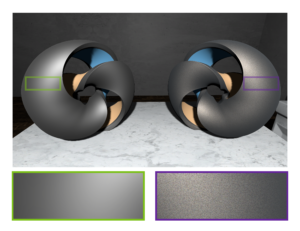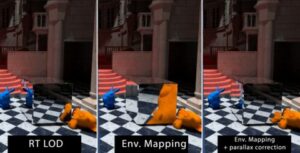Kristoffer Waldow, M.Sc.
Kristoffer Waldow arbeitet als wissenschaftlicher Mitarbeiter an der TH Köln.

Kristoffer Waldow arbeitet als wissenschaftlicher Mitarbeiter an der TH Köln.

Ursula Derichs arbeitet als wissenschaftliche Mitarbeiterin an der TH Köln.

Olaf Clausen, Martin Mišiak, Arnulph Fuhrmann, Ricardo Marroquim and Marc Erich Latoschik
Journal of Computer Graphics Techniques (JCGT), vol. 13, no. 1, 1-27, 2024

Martin Mišiak, Arnulph Fuhrmann, Marc Erich Latoschik
ACM Symposium on Applied Perception 2023 (SAP ’23)

Olaf Clausen, Yang Chen, Arnulph Fuhrmann and Ricardo Marroquim
Computer Graphics Forum, 42: 245-260.

Martin Mišiak, Arnulph Fuhrmann, Marc Erich Latoschik
Proceedings of the 27th ACM Symposium on Virtual Reality Software and Technology. 2021

Ein kollaboratives und immersives Virtual Reality Trainingssystem für Rettungskräfte und Katastrophenvorsorge

Ursula Derichs, Martin Mišiak and Arnulph Fuhrmann
Virtuelle und Erweiterte Realität – 17. Workshop der GI-Fachgruppe VR/AR, 2020, Trier, Germany

Sven Hinze, Martin Mišiak and Arnulph Fuhrmann
Virtuelle und Erweiterte Realität – 17. Workshop der GI-Fachgruppe VR/AR, 2020, Trier, Germany

Kristoffer Waldow, Arnulph Fuhrmann and Stefan M. Grünvogel In: Proceedings…

When rendering images in real-time, shading pixels is a comparatively expensive
operation. Especially for head-mounted displays, where separate images are rendered for
each eye and high frame rates need to be achieved. Upscaling algorithms are one possibility
of reducing the pixel shading costs. Four basic upscaling algorithms are implemented in a
VR rendering system, with a subsequent user study on subjective image quality. We find
that users preferred methods with a better contrast preservation.
In this paper, we present a Mixed Reality telepresence system that allows the connection of multiple AR or VR devices to create a shared virtual environment by using the simple MQTT networking protocol. It follows a subscribe-publish pattern for reliable and easy platform independent integration. Therefore, it is possible to realize different clients that handle communication and allow remote collaboration. To allow embodied natural human interaction, the system maps the human interaction channels, gestures, gaze and speech, to an abstract stylized avatar by using an upper body inverse kinematic approach. This setup allows spatially separated persons to interact with each other via an avatar-mediated communication.

The simulation of light-matter interaction is a major challenge in computer graphics. Particularly challenging is the modelling of light-matter interaction of rough surfaces, which contain several different scales of roughness where many different scattering phenomena take place. There are still appearance critical phenomena that are weakly approximated or even not included at all by current BRDF models. One of these phenomena is the reddening effect, which describes a tilting of the reflectance spectra towards long wavelengths especially in the specular reflection. The observation that the reddening effect takes place on rough surfaces is new and the characteristics and source of the reddening effect have not been thoroughly researched and explained. Furthermore, it was not even clear whether the reddening really exists or the observed effect resulted from measurement errors. In this work we give a short introduction to the reddening effect and show that it is indeed a property of the material reflectance function, and does not originate from measurement errors or optical aberrations.

In Augmented Reality, interaction with the environment can be achieved with a number of different approaches. In current systems, the most common are hand and gesture inputs. However experimental applications also integrated smartphones as intuitive interaction devices and demonstrated great potential for different tasks. One particular task is constrained object manipulation, for which we conducted a user study. In it we compared standard gesture-based approaches with a touch-based interaction via smartphone. We found that a touch-based interface is significantly more efficient, although gestures are being subjectively more accepted. From these results we draw conclusions on how smartphones can be used to realize modern interfaces in AR.